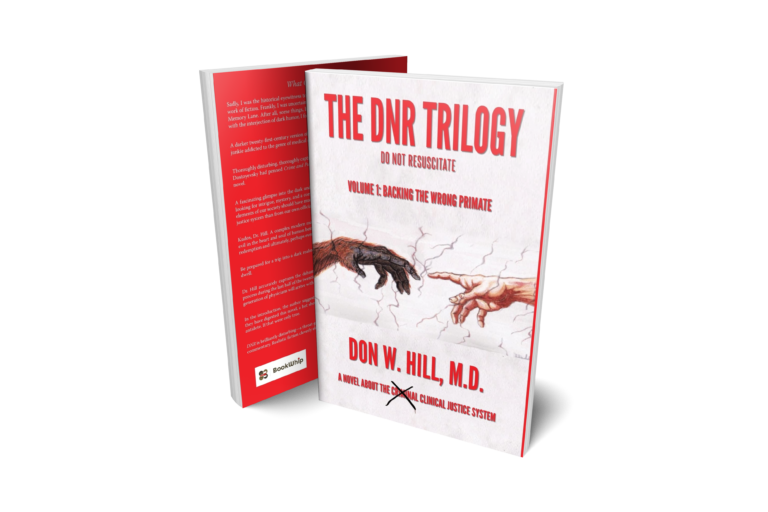

book review by Mark Heisey
“Brewster stopped his seemingly incoherent rant and went outside to stand in the pouring rain. It was as if a
house immolated in flames was suddenly being doused with a firehose.”
Dr. J.D. Brewster begins most days by putting a loaded .45 pistol in his mouth. He has been morosely
ruminating on an event he orchestrated and carried out with a few others almost thirty-five years ago when he was a medical
student. Back then, he saw a bright future ahead of him. He was one of a few dual M.D./Ph.D. students at his Texas medical
school and was researching a mysterious hepatitis strain that would eventually become known as hepatitis C. He was, and
admittedly still is, a bit racist and prone to bullshit, particularly of the intellectual variety.
One of his duties is to drain the accumulating pus inclined to pool in hepatitis patients. During one of these visits, he learns the
backstory of a violent criminal he is helping. The professed killer is gleeful about his victims, and it turns out that one of those
victims is a nurse he has been treating who is obviously dying. She caught hepatitis after helping the criminal, who was injured in
a car crash while high. Brewster is not a particularly religious man, but it seems several people have been repeating certain
ideas in his vicinity—ideas about the purpose of life and doing the right thing. At this point, Brewster and the security guard
decide to end this prisoner’s life, but their plan is thwarted. In addition, a nurse is brutally assaulted moments after Brewster
impatiently leaves her with a dead battery in a parking garage. Later, Brewster must try to save her life. What did Brewster do
during that period that has him ready to take his own life thirty-five years later?
Hill’s sentences are solid, and the plot is easy to follow. Most of the writing relies on sarcasm and purposely obtuse intellectual
or overtly colloquial language to establish its tone and mood. This first book in his trilogy contains aspects of many genres. The
two essential ingredients to this book are the mystery perpetrated many years ago by a small band of people, most of whom are
now dead, and the character of Brewster himself. The mystery is drawn out through the entirety of this book, and those involved
who speak of it think of it as a great sin (although not Brewster). Hill does a good job of getting the reader to believe they know
what the mystery is, only to pull it back and keep them involved. There are times when the repeated sin these characters are
remorseful over seems to pale in comparison to the violence sometimes gleefully shared in the story, which can result in a
slightly confusing feel.
The protagonist is equal parts a caricature of a Texas blowhard and a socially inept intellectual. He can also be sexist, racist,
and rude, making him a hard character with which to empathize. Part of this, though, seems to be purposely written, as the
overall tone and mood of the novel, rather than contrasting with Brewster’s character, reflect him, resulting in a book that
belongs to an era most readers and the world have left behind. There are hints here of Toole’s A Confederacy of Dunces. The
book’s central mystery is maintained throughout, and the work ends with a weighty cliffhanger that will entice readers to look
forward to the next offering in the trilogy.
6